Leveraging the Power of Parametric Design for CANstruction
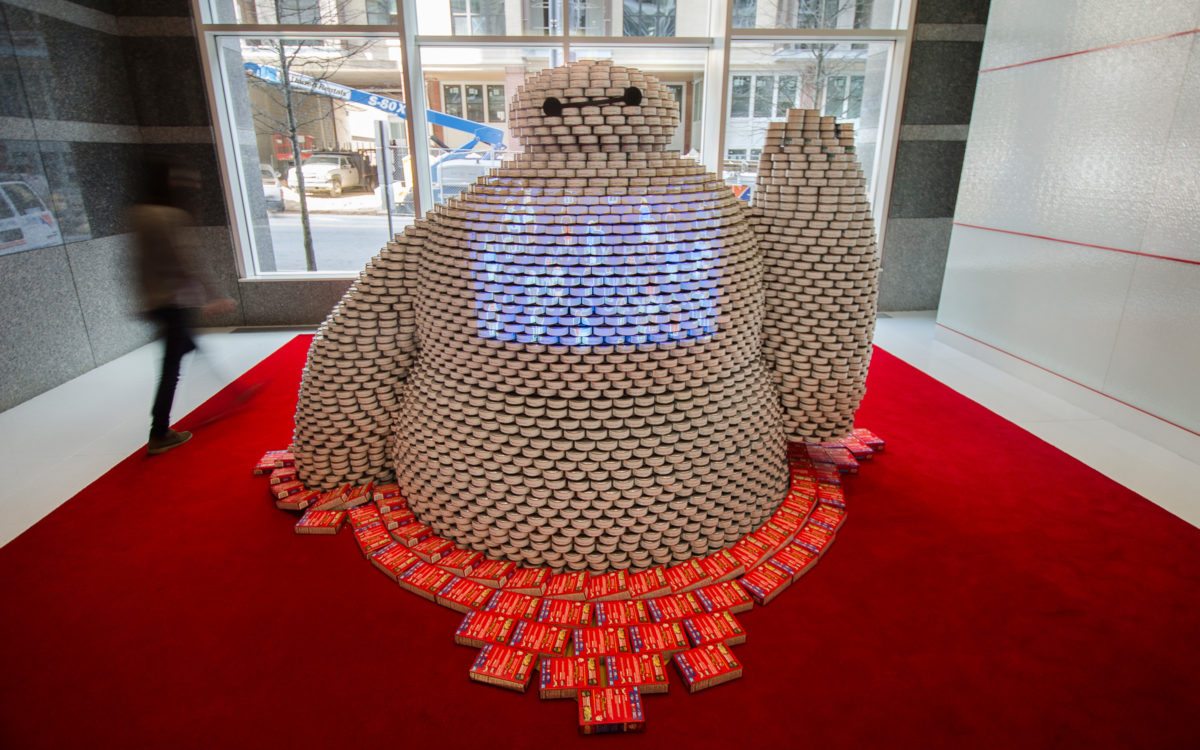
How does the brain comprehend the unimaginable? An idea of a scale so large, it can’t be envisioned by the mind? When Clark Nexsen and RedHat joined forces for the AIA Triangle’s 2016 CANstruction, our team faced a complex challenge: how to efficiently design a significant structure, comprised of thousands of tiny units – 9,000 cans of tuna, to be exact.
An event founded by the Society for Design Administration (SDA), CANstruction is a unique charity art exhibition and event featuring structures made by teams of volunteers and composed entirely out of full cans of food. At the end of the exhibition, all food is donated to local hunger relief organizations. As a firm, Clark Nexsen regularly participates in CANstruction events, blending our passion for design with our commitment to the communities in which we live and work.
Bringing together a team with architectural design vision (Clark Nexsen) and technological focus (RedHat) inspired us to leverage the powerful technology of parametric design – facilitating a more efficient design process where ideas can be easily explored and reimagined. Ten years ago, a CANstruction design would require one of two fundamentally inefficient approaches: drawing each and every one of the 9,000 cans manually – carefully laying them out to visualize the form of the structure – essentially a waste of time if the resulting design doesn’t look good; or winging it, coming up with a design and ‘guesstimating’ how many cans will be needed – never knowing how this will look until building begins.
In an age of self-driving cars, we are witnessing technology transform industries, and architecture and engineering is no exception. Based on the premise that we shouldn’t have to individually draw each can, but instead should be able to rapidly make changes and move through design iterations, our team elected to use a parametric design script to meet the challenges presented by the CANstruction design exercise. While opinions differ, as the architecture and engineering industry moves toward data-driven design, a consistent point of emphasis is the importance of more efficiently completing tasks that require a lot of time, but little thought. Frequently part of a very large, complex design, these small, time-consuming efforts are better met with technology, freeing designers to focus on crafting more meaningful elements.
The exercise of parametric design focuses on creating scripts and tools to meet this need and free designers to design. Like our DNA, each script is unique and tailored specifically to its project, although it may incorporate pieces of past scripts. By utilizing a script to scale and manage repetitive components of a much greater whole, architects are enabled to create designs outside of the typical comfort zone. Perhaps even more compelling, parametric scripting generates the visualization of a physical object that will be created – contrasted with normal scripting, which rarely creates something tangible and touchable.
To create BayMax with parametric scripting, the team considered several form compositions ranging from major (such as the actual scale of the structure) to minor (such as whether he would be waving his arm or leaning to the side). Without this tool, envisioning these form variations would have been impractical, if not impossible. Conceptually simple, our parametric design script allowed us to:
- Take a simplified, modeled form;
- Slice it into layers;
- Draw cans along the edges of the layer;
- And gain immediate insight into can count, size, distribution, and the translation of the design vision.
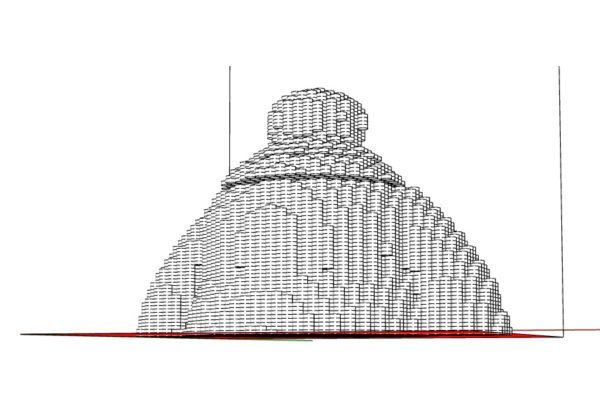
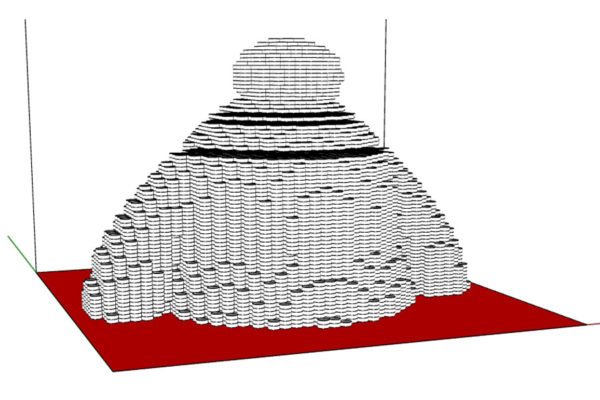
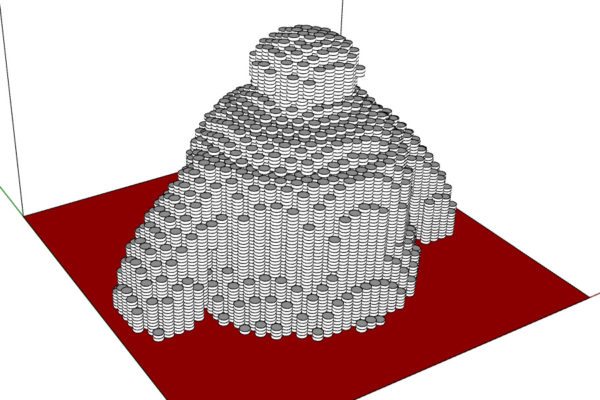
Proof of concept sketch script showing the cans stacked, even with a few rows missing, quickly tested an idea to see if it was possible.
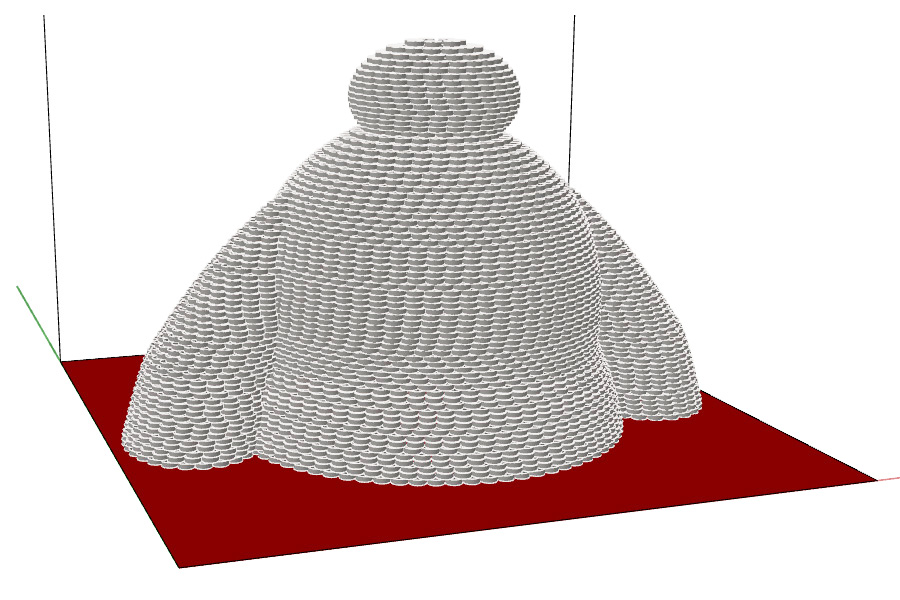
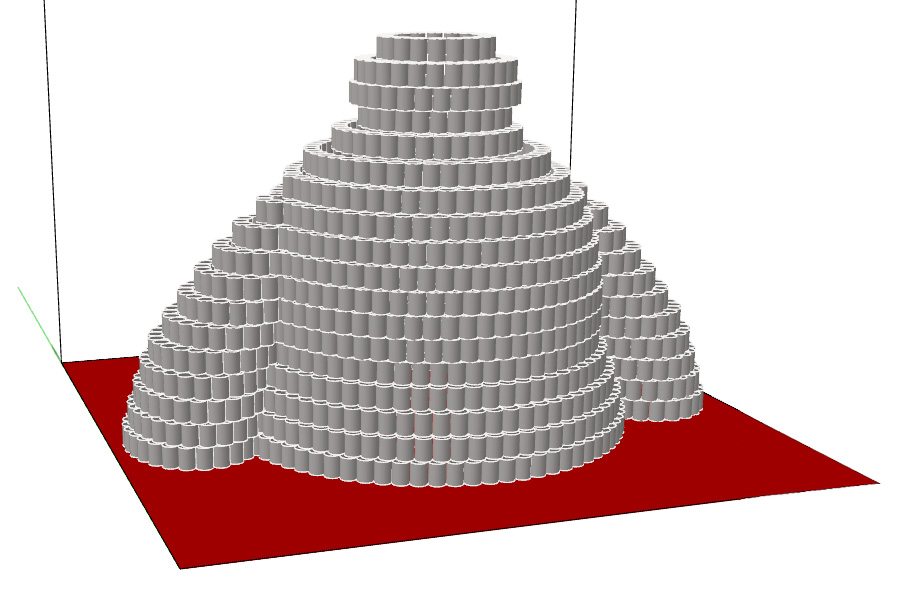
Further refinement showing the cans spaced around the perimeter. Seeing a taller soup type can and a smaller tuna type can helped us decide what type of cans to use.
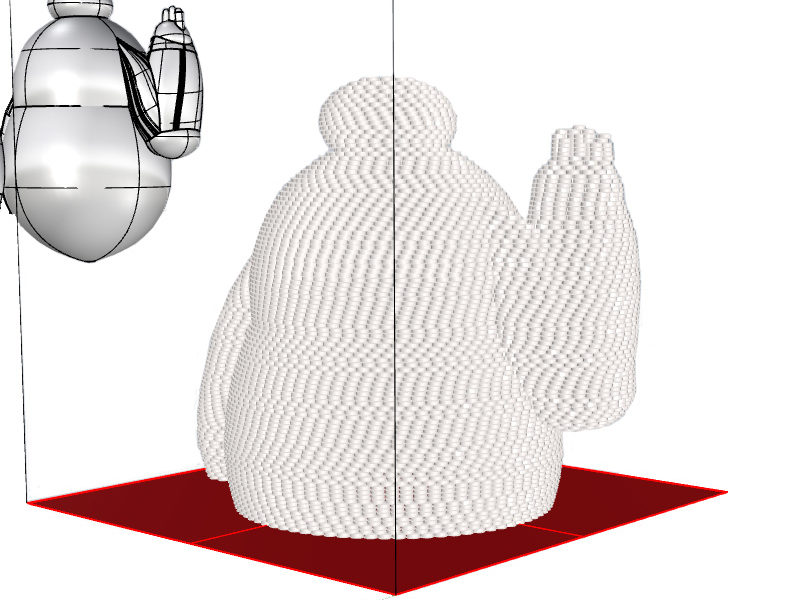
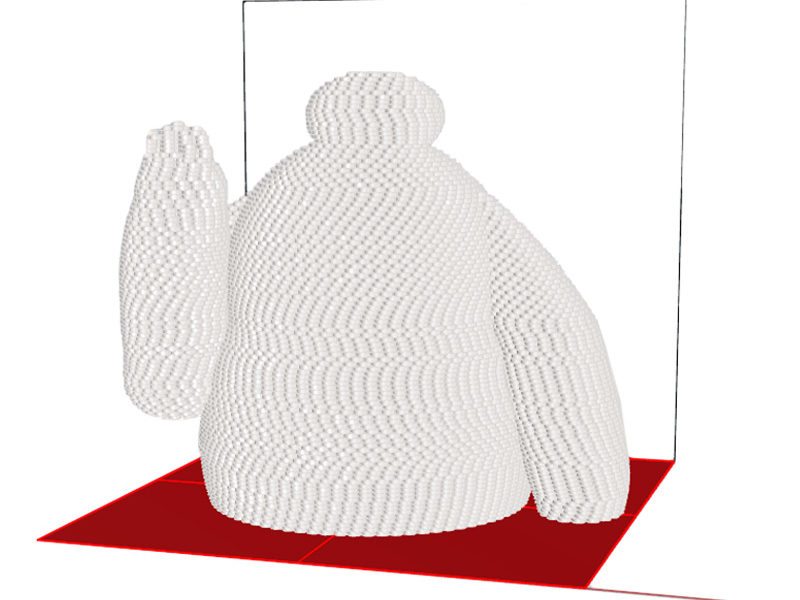
A study of the arm and how visible it would be from the front and back.
Simple, but powerful. The script empowered the Clark Nexsen and RedHat team to rapidly assess potential design changes such as can size by simply adjusting that element in the script and immediately seeing how that change impacts the form. Hours of work if done manually became short, minutes-long conversations about which can sizes and combinations maintain the design vision. The use of the parametric design script provided cost benefits beyond design time, as well. When our team engaged with the fabricator for CNC machining of the supporting layers, we were able to scale the form of BayMax down slightly – reducing the number of pieces of fabricated material required, delivering a cost savings of over $1,000 in labor and 21 sheets of material.
Based on the belief that the best ideas come from collaboration, our team designed across disciplines, working with in-house structural engineering to make BayMax’s arm appear to magically float using only hardboard panels, threaded rods, and the cans. Without this collaboration, the partnership with RedHat, and the open exchange of ideas, our can version of BayMax would not have been possible. Innovative design comes from the human mind – the parametric script simply facilitated our work, making it more efficient and allowing us to spend more time on the distinguishing elements that made ours an award-winning structure, recognized with the People’s Choice Award.
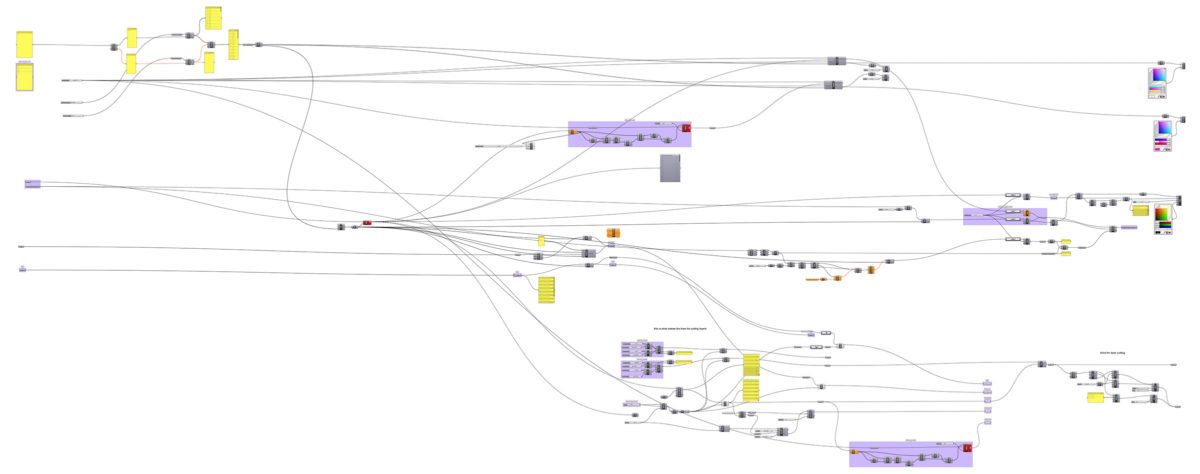
Grasshopper overall script. What the script actually looked like. Data/information moves from the left to the right. With the inputs of the form and can size being on the left and then the graphical visualization being on the right.
